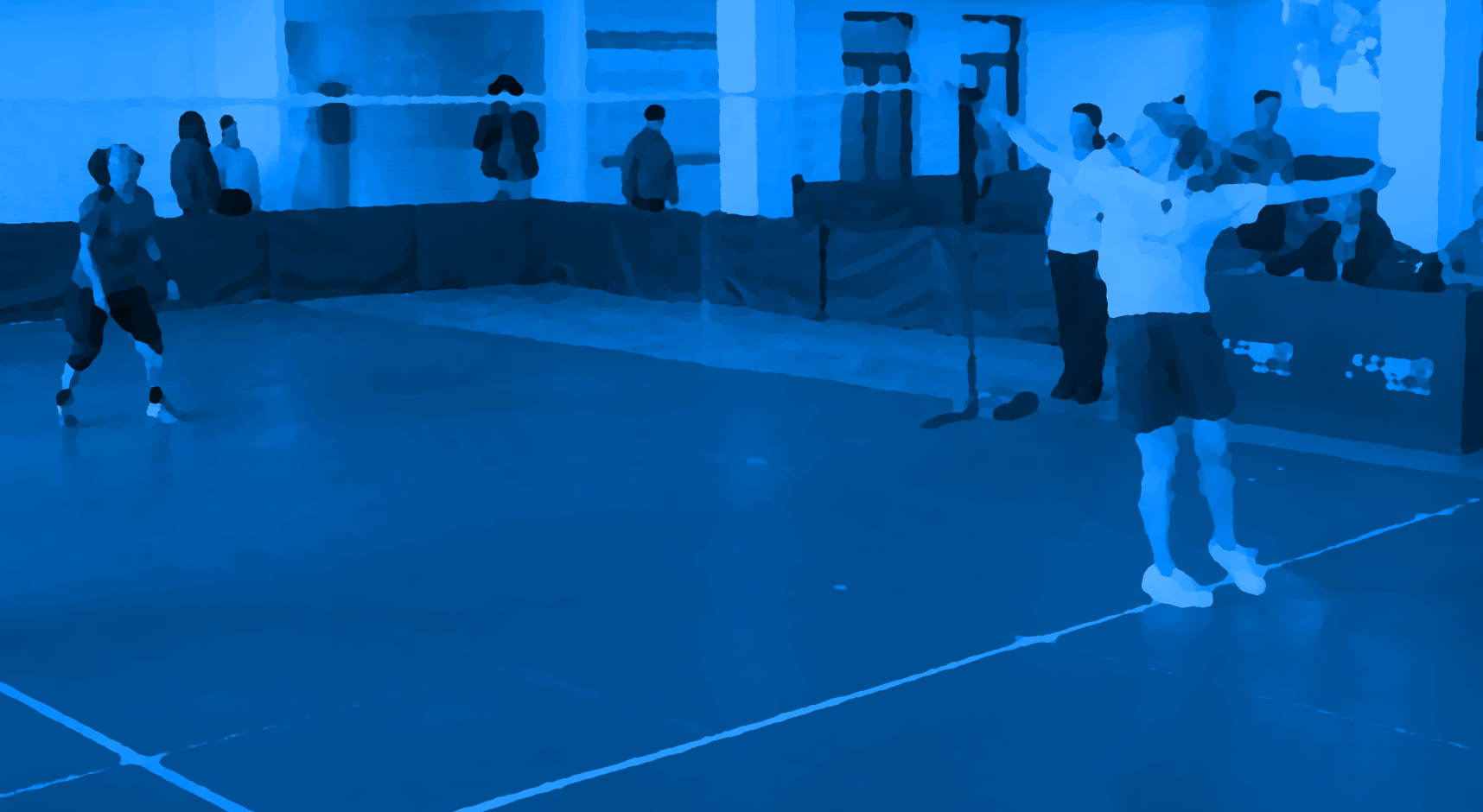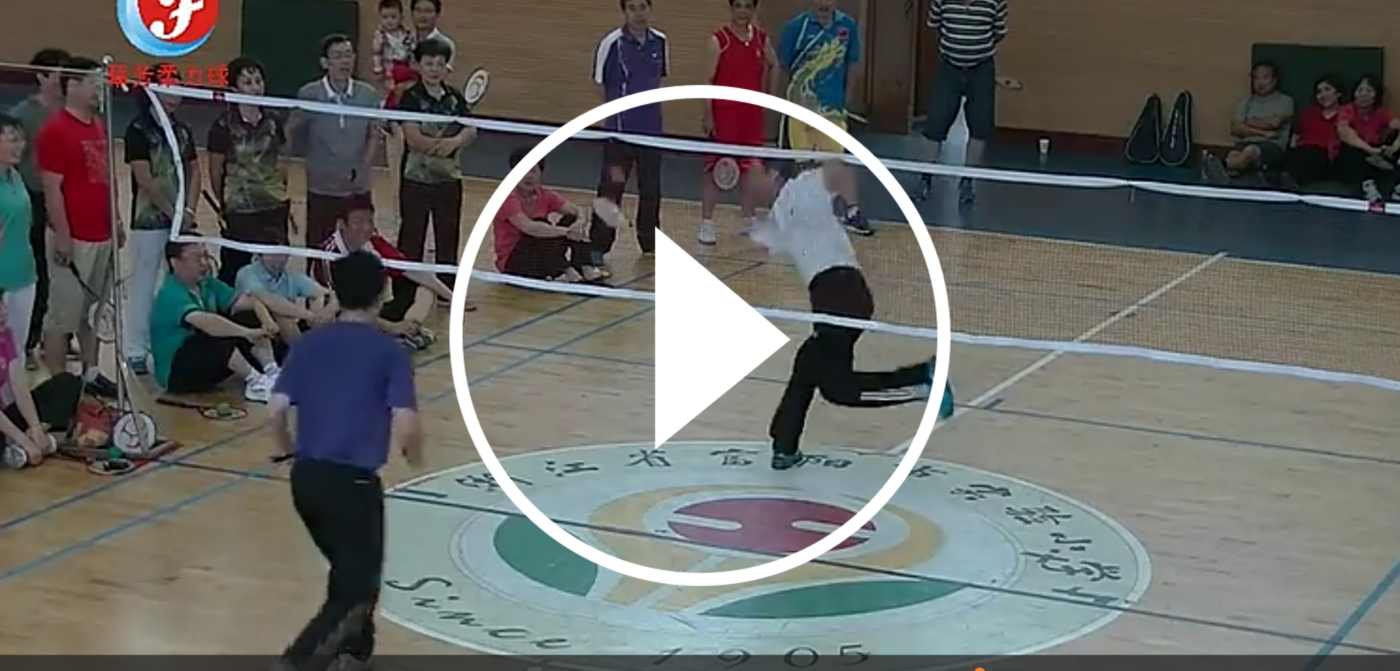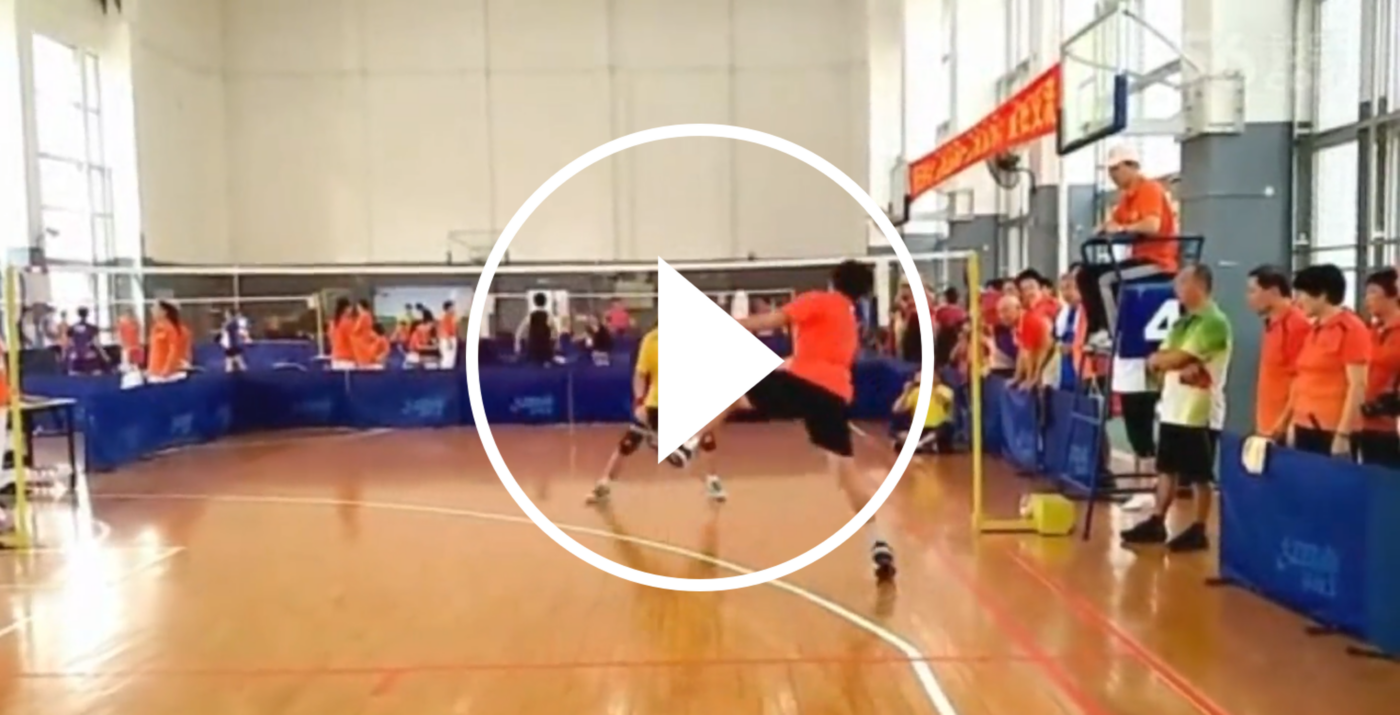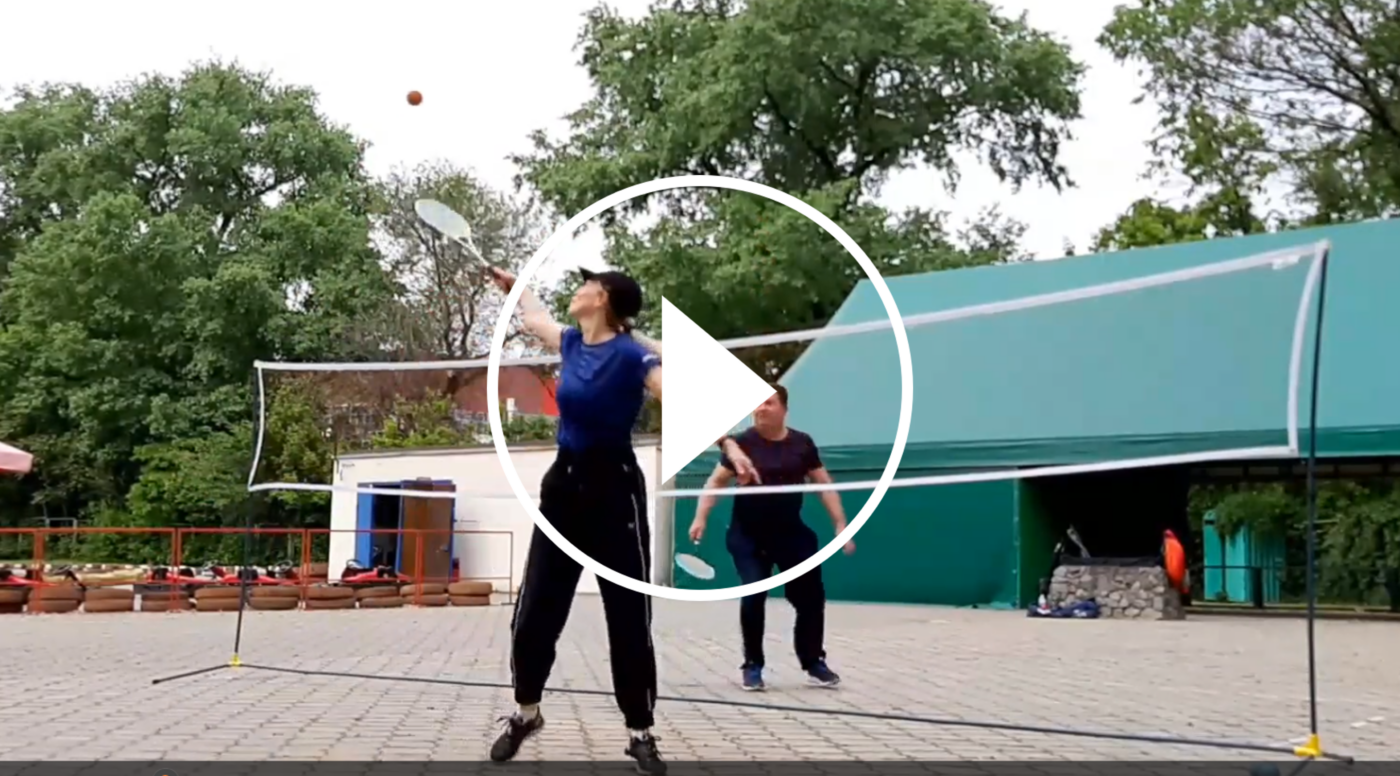Your goal is to win 2 sets and thus the match. To do this, you have a serve as well as a multitude of other moves to your disposal, which you use as well-placed as possible, if necessary surprisingly as well as quickly. If your opponent does not reach the ball before it hits the ground or your opponents ball hits the net or is out of bounds, you score. You may only target the front area of the opponent’s half.
Rules
The game is played best of three sets. One set ends after 4 minutes. The time that the ball is in play („net playing time“) is counted. Pauses between rallies, i.e. when the ball is not moved, do not count towards the 4 minutes of a set. The athlete who has scored the most points at the end of the 4 minutes wins the respective set. If the score is tied after 4 minutes, another point („decider“) is played. The decider then wins the set.
The Court
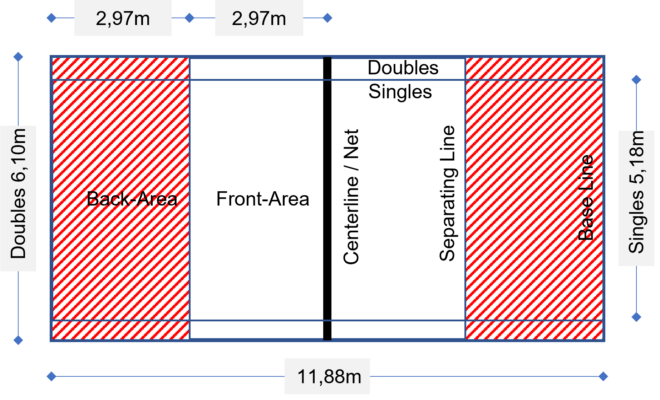
- Use the area enclosed by the separating line, the sidelines for doubles and the centerline / net (marked white).
- The court area to be used is 5.94m long and 6.10m wide
- The entire court should be free-standing within a radius of at least 1m
- The ceiling height must be at least 6m
- All lines are at least 2cm thick.
- The center line separates the court into two equal halves
- The half-field dividing line is parallel to the center line and 2.97m from it
- The half-field dividing line itself still counts as part of the front field
- The serve area is the Back-Area
- The net is stretched above the centerline
- Net height is 1.75m in the center and may be a maximum of 1.80m at the outer edges

General Rules
Scoring
- Balls that bounce inside or on the court boundaries on the opponent’s side, including the ones touching the net count as a point
- All balls defined as errors (see below) count as points against the player making the mistake / error
- Two out of three sets will be used to determine the outcome („best of 3″).
- Each set is conditionally limited to a net game time of 4
(Net time: refers to the effective game time, that is, the sum of
the ball possession time of both sides / rallies in the game. Remaining game time
excluding all „dead ball“ conditions).
- In the event of a tie after 4 minutes, a final ball („decider“) will be played to determine the winner of the set
- At the beginning of the match, the referee tosses a coin. The player winning the coin toss can chose either a preferred court half or the right for the first serve, for set one. If the winner choses a court half, than the loser gets to chose the right to serve and vice versa.
- After the first set, the player swap court halfs
- In case of a third set, the referee will toss a coin once again. The player winning the coin toss can chose either a preferred court half or the right for the first serve, for set three. If the winner choses a court half, than the loser gets to chose the right to serve and vice versa
Errors
- Balls touching the floor outside the court boundaries on the opponent’s side (out ball)
- Balls that do not make it across the net, are played under the net or even fly through the net
- Balls that are not caught or returned on your own side of the court
- Balls that touch anything other than the racquet blade or net during rallies (e.g., clothing, body parts, net stands, etc.)
- Balls where the racquet grazes / touches the ground during the swing process
- Balls where the player’s racquet touches a part of the body, clothing, net or net stand.
- Balls where the player steps on or over the center line
- Balls in which the player takes more than one step after the ball is on the racquet blade
Correct / Incorrect Swings
- The ball must leave the racket in an upward or horizontal trajectory
- Balls leaving the racket in a downward trajectory are considered invalid and count as points fort he opponent / receving player
(Net time: refers to the effective game time, that is, the sum of
the ball possession time of both sides / rallies in the game. Remaining game time
excluding all „dead ball“ conditions).
Serve
- The players take turns serving, after every serve
- The serve takes place upon the main referee’s signal / blowing of the whistle.
- The player serves in the dedicated area. At least one foot must stay in constant contact with the ground during the serve. One hand throws the ball high and to the back, whereby the ball must cover a distance of at least 30cm. The other hand lets in the ball with the racquet. By a correct execution of the round swing process, the ball is played over the net to the other side. Only the high and low flying serve (high forehand and backhand) is allowed.
Incorrect Serves
- the player does not stand in the dedicated serve area or on the separating line
- the player does not throw the ball clearly beyond 30cm
- the player moves both feet during the serve, losing contact with the ground
- the player jumps up or turns the racket during the serve
the player applies an incorrect swing technique after the ball is on the racquet blade, such as:- interrupted swings
- pushing, shaking or lifting the ball
- the ball does not reach the racket blade or it cannot be released out of the racket
- the ball does not cross over the net or is stopped by the net
- the ball touches the ground outside the prescribed area
- the ball touches other objects (except the net) after the serve, such as body and clothing parts of the own team
- The high throw-in and low let-out swing technique is not used
Referees
- One main referee is required, positioned at the net, at net height level
- The main referee is responsible for:
- Time taking
- Score keeping
- Deciding on correctness / incorrectness of swings
- Deciding whether balls are in / out
- Deciding whether players stepped on the line or inside of the Front-Area in the serve moment
- One scorer for recording score and displaying it on a special board
- Two additional line referees, one per court half, are optional
- The optional decide whether balls are in / out
- The main referee may overrule the line referees
Updates and Blogs
Here you can find updates and blog posts covering these disciplines.
Updates & Blogs
